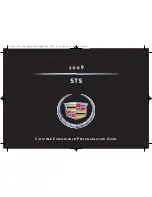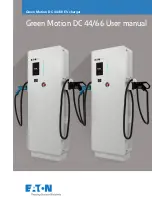
For general information about CAN-troubleshooting:
see
GENERAL INFORMATION ABOUT FAULT-TRACING IN THE CAN NETWORK
HINT: DiCE can be used as fault detection tool if fault is suspected on the CAN-net that cannot be
detected with normal troubleshooting. Interference, intermittent faults, faulty messages on the CAN-net
(chattering control modules) etc., are examples of such faults. The tool registers fault messages used on
the CAN-net. Fault messages may be caused by short intermittent malfunctions on the CAN-net or by a
control module sending fault messages. See tools:951 3010 (memory card) as well as associated TJ 20402.
HINT: If the load on the CAN network is too high, this may be due to a control module transmitting
faulty messages on the CAN network. This is called a disruptive control module. The fault may also be
due to an intermittent short-circuit to supply voltage or ground in one of the CAN cables. This results in
the control modules on the CAN network starting to send faulty messages. The fault may occur without
any of the control modules storing a diagnostic trouble code (DTC). The voltage can be measured
between the CAN cables in order to check the load on the CAN network.
Ignition on.
Connect OBDII-Box
(951 3015)
to the diagnostics socket.
Check communication/load on CAN-net by measuring voltage between CAN-L and CAN-H. Measure voltage
between the following connections on the OBDII-box/diagnostics socket.
#3 and #11. The average value of the voltage must be approximately 0.6-1.4 V. The voltage shall
normally be between 0.55 - 0.90 V. A higher voltage may indicate increased traffic on the CAN-net. In
case of fault in communication/too high traffic on the CAN-net, the voltage is considerably higher than
the above stated values.
In order to identify which control module has faulty communication, cut the power supply to one control
module at a time. Check the voltage in the CAN cables again. The easiest way to cut the power supply is to
remove the fuse(s) for the relevant control module. Repeat until the voltage between the CAN wiring drops to
the normal level.
HINT: When the suspected defective control module has been identified, connect and disconnect the
supply voltage to the control module a number of times to verify that the malfunction appears and
disappears. Switch off the ignition between each check.
NOTE:
It is not necessarily the control module that has set the diagnostic trouble code
that communicates incorrectly. Faulty messages can come from any control
module in the same section of the CAN network. However, faulty
communication in one network cannot affect the communication on the other
network. In other words, faulty communication on the LS-CAN cannot disrupt
communication on the HS-CAN and vice versa.
NOTE:
When connecting and disconnecting certain control modules, diagnostic
trouble codes (DTCs) may be stored in other control modules.
2012 Volvo C30 T-5
ELECTRICAL Body Electrical
















































